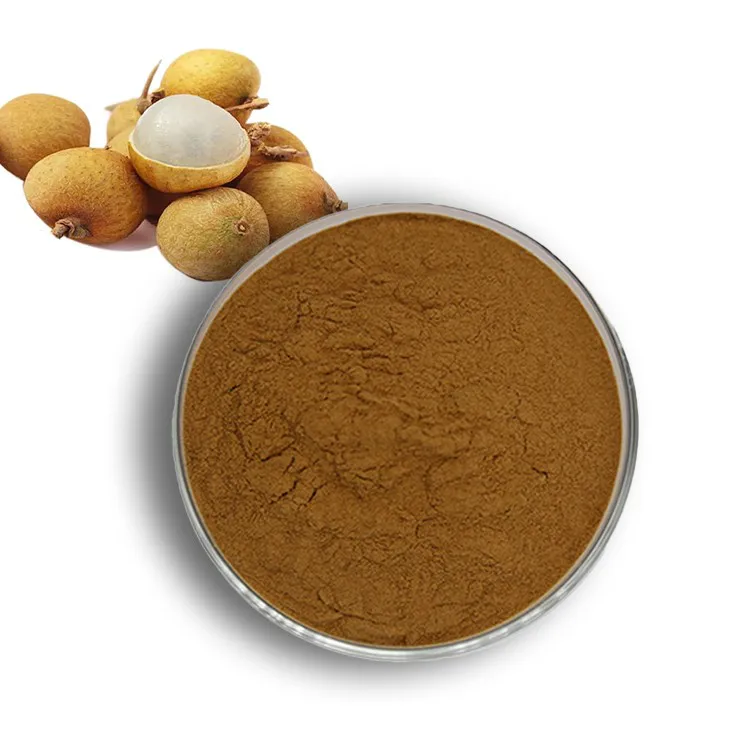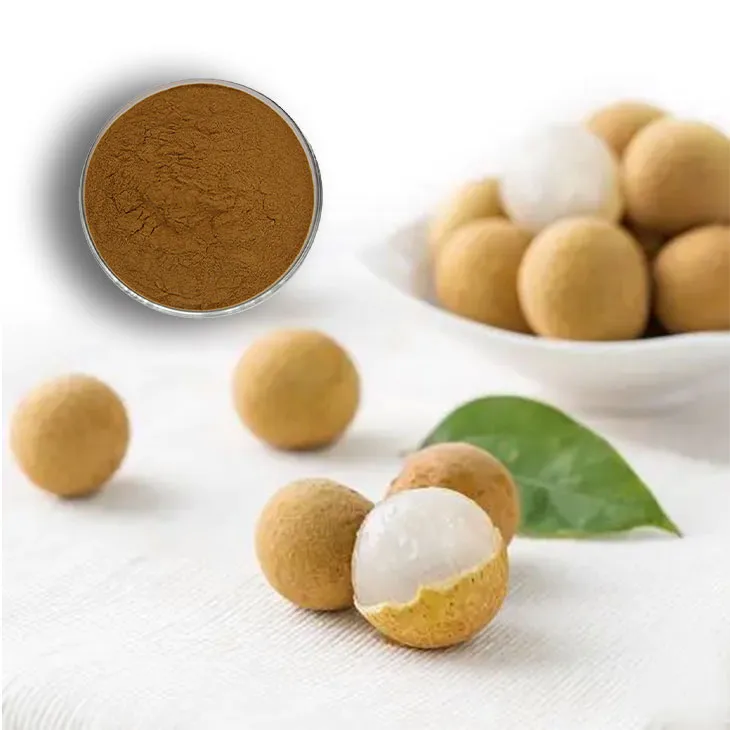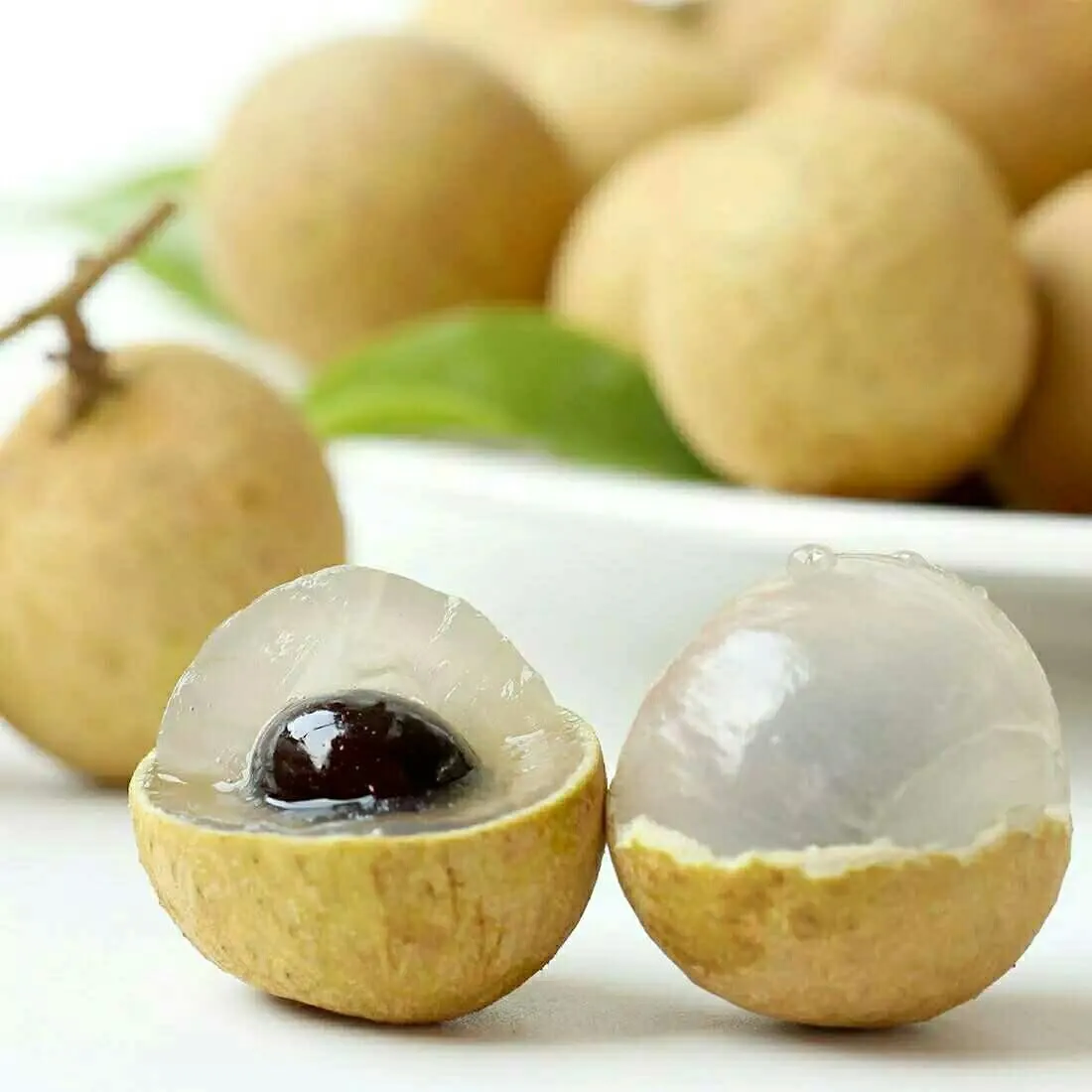- 0086-571-85302990
- sales@greenskybio.com
How to extract longan extract from plants?
2024-11-28

1. Introduction
Longan, also known as Dimocarpus longan, is a tropical and subtropical fruit tree native to China. The longan fruit is rich in nutrients and has certain medicinal value. Longan Extract has been widely used in the fields of food, medicine, and cosmetics. This article will focus on the extraction procedures, equipment, and quality control in the process of obtaining Longan Extract from plants.

2. Raw Material Preparation
2.1. Selection of Longan Fruits
When choosing longan fruits for extraction, several factors need to be considered. Firstly, the fruits should be fully ripe. Ripe longan fruits usually have a darker brown color on the shell and a sweet aroma. Immature fruits may not contain enough active ingredients for extraction. Secondly, the fruits should be free from diseases and pests. Fruits with signs of rot or insect damage can affect the quality of the extract. It is advisable to select longan fruits from reliable sources, such as orchards with good agricultural practices.
2.2. Cleaning and Pretreatment
After selection, the longan fruits need to be thoroughly cleaned. This can be done by washing them with clean water several times to remove dirt, dust, and other impurities on the surface. Then, the fruits are usually peeled and pitted. The peeled and pitted longan fruits are ready for further extraction processes. In some cases, the longan fruits may be dried slightly before extraction to reduce the water content, which can make the extraction process more efficient.

3. Extraction Procedures
3.1. Solvent Extraction
- One of the most common methods for Longan Extract extraction is solvent extraction. In this method, a suitable solvent is selected. Ethanol is often a preferred solvent due to its ability to dissolve a wide range of active ingredients in longan fruits while being relatively safe and easy to handle.
- The peeled and pitted longan fruits are placed in a container, and the solvent is added in an appropriate ratio. For example, a ratio of 1:5 (longan fruits: solvent) may be used. The container is then sealed to prevent solvent evaporation.
- The mixture is stirred continuously at a certain temperature for a certain period of time. The temperature and time can vary depending on the specific requirements and experimental conditions. Generally, a temperature range of 25 - 50°C and a stirring time of 2 - 6 hours may be suitable.
- After stirring, the mixture is filtered to separate the liquid extract from the solid residue. The filtrate contains the longan extract dissolved in the solvent.
3.2. Supercritical Fluid Extraction
- Supercritical fluid extraction is another advanced method for longan extract extraction. Carbon dioxide (CO₂) is commonly used as the supercritical fluid. In the supercritical state, CO₂ has unique properties such as high diffusivity and low viscosity, which make it an excellent solvent for extracting active ingredients.
- The longan fruits are placed in the extraction chamber of the supercritical fluid extraction equipment. The system is then pressurized and heated to bring the CO₂ to its supercritical state.
- The supercritical CO₂ is passed through the longan fruits, and the active ingredients are dissolved in the CO₂. The extraction process is carried out under controlled pressure and temperature conditions. For example, a pressure range of 10 - 30 MPa and a temperature range of 35 - 60°C may be used.
- After extraction, the pressure is reduced, and the CO₂ returns to the gaseous state, leaving behind the longan extract. This method has the advantages of being environmentally friendly, producing high - quality extracts, and not leaving any solvent residues.
3.3. Maceration
- Maceration is a simple and traditional extraction method. In this process, the peeled and pitted longan fruits are soaked in a solvent (such as water or ethanol) for a long period of time.
- The container with the longan fruits and solvent is placed in a cool and dark place. The soaking time can range from several days to several weeks. During this time, the active ingredients in the longan fruits gradually dissolve in the solvent.
- After the soaking period, the liquid is filtered to obtain the longan extract. Although this method is relatively simple, it may take a longer time compared to other extraction methods.

4. Equipment for Longan Extract Extraction
4.1. Solvent Extraction Equipment
For solvent extraction, basic equipment includes extraction vessels, stirrers, and filters. The extraction vessel should be made of materials that are resistant to the solvent, such as glass or stainless steel. The stirrer is used to ensure uniform mixing of the longan fruits and the solvent. There are different types of stirrers available, such as magnetic stirrers or mechanical stirrers. The filter is used to separate the extract from the solid residue. Common filters include filter papers, filter membranes, or filter cartridges.
4.2. Supercritical Fluid Extraction Equipment
Supercritical fluid extraction equipment is more complex. It consists of a high - pressure pump, an extraction chamber, a temperature - control system, and a pressure - control system. The high - pressure pump is used to pressurize the CO₂ to its supercritical state. The extraction chamber is where the longan fruits are placed for extraction. The temperature - control system and the pressure - control system are used to maintain the proper supercritical conditions during the extraction process.
4.3. Maceration Equipment
Maceration mainly requires simple containers such as glass jars or ceramic pots. These containers should be able to be sealed well to prevent solvent evaporation during the long - term soaking process. A sieve or filter cloth can be used for filtering the extract after maceration.

5. Quality Control in Longan Extract Extraction
5.1. Active Ingredient Analysis
One of the important aspects of quality control is to analyze the active ingredients in the longan extract. Polyphenols, flavonoids, and saccharides are some of the main active ingredients in longan. High - performance liquid chromatography (HPLC) and gas chromatography - mass spectrometry (GC - MS) are commonly used analytical techniques to determine the content and composition of these active ingredients. By comparing the results with the standard values, the quality of the extract can be evaluated.
5.2. Purity and Contamination Control
- The purity of the longan extract should be ensured. This includes minimizing the presence of impurities such as residual solvents, heavy metals, and pesticides. Residual solvents can be detected by methods such as headspace gas chromatography. Heavy metals such as lead, mercury, and cadmium can be analyzed using atomic absorption spectrometry or inductively coupled plasma - mass spectrometry (ICP - MS). Pesticide residues can be determined by gas chromatography or liquid chromatography - tandem mass spectrometry (LC - MS/MS).
- During the extraction process, strict control should be exercised to prevent contamination. This includes using clean raw materials, clean equipment, and proper handling procedures. For example, all equipment should be thoroughly cleaned and sterilized before use to avoid introducing contaminants.
5.3. Microbiological Quality Control
Microbiological quality is also crucial. The longan extract should be free from harmful microorganisms such as bacteria, yeasts, and molds. Microbiological tests such as total plate count, yeast and mold count, and detection of specific pathogens can be carried out. If necessary, sterilization or pasteurization processes can be applied to ensure the microbiological safety of the extract.
6. Conclusion
In conclusion, the extraction of longan extract from plants involves multiple steps, including raw material preparation, extraction procedures, and quality control. Different extraction methods and equipment can be chosen depending on the specific requirements and application scenarios. Through strict quality control measures, high - quality longan extracts can be obtained, which can be widely used in various industries such as food, medicine, and cosmetics.
FAQ:
Question 1: What are the basic steps in extracting longan extract from plants?
The basic steps typically involve harvesting ripe longan fruits. First, the fruits are washed thoroughly to remove any dirt or debris. Then, they are peeled and the seeds are removed. Next, the flesh can be crushed or blended to form a pulp. After that, extraction solvents may be added to the pulp to draw out the desired compounds. The mixture is then filtered to separate the liquid extract from the solid residue. Finally, the extract may be further purified and concentrated.
Question 2: What kind of equipment is needed for longan extract extraction?
For longan extract extraction, some common equipment is required. A blender or crusher is needed to break down the longan flesh into a pulp. Filtration equipment such as filter paper or a filtration apparatus is necessary to separate the extract from the solid parts. Additionally, containers for holding the longan fruits, the pulp, and the extract during the process are essential. If heat is involved in the extraction or concentration process, a heating device like a water bath or a hot plate may also be needed.
Question 3: How can we ensure the quality of longan extract during the extraction process?
To ensure the quality of longan extract during extraction, several measures can be taken. Firstly, starting with high - quality longan fruits is crucial. Only ripe and undamaged fruits should be used. During the extraction process, strict control of the extraction conditions such as temperature, pH, and the ratio of solvent to longan pulp is important. Regular sampling and testing for purity, concentration, and the presence of contaminants can also be done. Using clean and sterile equipment throughout the process helps prevent contamination that could affect the quality of the extract.
Question 4: Are there any specific solvents that are commonly used for longan extract extraction?
Yes, there are some common solvents used for longan extract extraction. Ethanol is a frequently used solvent as it is effective in extracting many of the bioactive compounds present in longan. Water can also be used, especially when extracting water - soluble components. Sometimes, a combination of ethanol and water in different ratios may be employed to optimize the extraction of different types of compounds from the longan pulp.
Question 5: Can the extraction method affect the properties of longan extract?
Yes, the extraction method can significantly affect the properties of longan extract. Different extraction methods may result in different yields of various compounds. For example, a more aggressive extraction method may extract a higher amount of certain components but may also cause degradation or alteration of some sensitive compounds. The choice of solvent, extraction time, and temperature can all influence the chemical composition, antioxidant activity, and other properties of the longan extract.
Related literature
- Optimization of Longan Extract Extraction: A Review"
- "Longan Extract: Extraction Techniques and Quality Assessment"
- "The Role of Solvents in Longan Extract Extraction"
- ▶ Hesperidin
- ▶ citrus bioflavonoids
- ▶ plant extract
- ▶ lycopene
- ▶ Diosmin
- ▶ Grape seed extract
- ▶ Sea buckthorn Juice Powder
- ▶ Beetroot powder
- ▶ Hops Extract
- ▶ Artichoke Extract
- ▶ Reishi mushroom extract
- ▶ Astaxanthin
- ▶ Green Tea Extract
- ▶ Curcumin Extract
- ▶ Horse Chestnut Extract
- ▶ Other Problems
- ▶ Boswellia Serrata Extract
- ▶ Resveratrol Extract
- ▶ Marigold Extract
- ▶ Grape Leaf Extract
- ▶ blog3
- ▶ blog4
-
Wholesale L - Tyrosine Suppliers.
2024-11-28
-
The best milk thistle extract in 2024.
2024-11-28
-
High - quality kidney bean extract products.
2024-11-28
-
The best aged garlic extract on the market.
2024-11-28
-
How to make powder with L - arginine.
2024-11-28
-
Selenium yeast
2024-11-28
-
Lycopene
2024-11-28
-
Chasteberry Extract
2024-11-28
-
Tinospora cordifolia extract
2024-11-28
-
White Peony Extract
2024-11-28
-
Polygonum multiflorum extract
2024-11-28
-
Red Vine Extract
2024-11-28
-
Kupilu Extract
2024-11-28
-
Alfalfa Meal
2024-11-28
-
Centella Asiatica Extract
2024-11-28





















